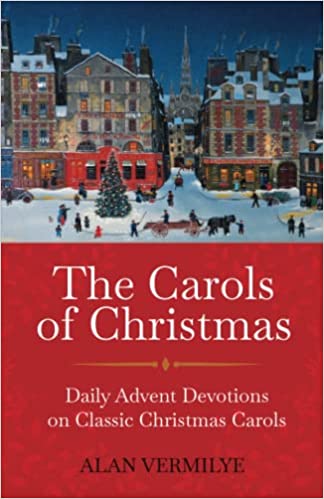In The Carols of Christmas, Alan Vermilye takes us through four well-known Christmas carols (one per week), providing us with a short history of the carol and a daily devotional about the respective carol. The carols being sung and discussed are O Holy Night, I Heard the Bells on Christmas Day, O Little Town of Bethlehem, and Hark! The Herald Angels Sing. This Advent study covers four weeks.
(Advent 2022)
Carols of Christmas – “O Holy Night” pt.1
Within this history of the carol, we should be able to see the history of the Christmas story itself – simple religious people, marginalized Jews, atheists, and censorious religious authorities all making their own contribution.
Carols of Christmas – “O Holy Night” pt.2
In following through these meditations, or at least following through the carol itself, we sing the gospel message. Singing half a carol is like reading only half a book or watching only half of a movie – we never truly get to the end.
Carols of Christmas – “I Heard the Bells on Christmas Day” pt.1
“In despair I bowed my head; ‘There is no peace on earth,’ I said . . . Then pealed the bells more loud and deep; ‘God is not dead, nor doth He sleep.’”
Carols of Christmas – “I Heard the Bells on Christmas Day” pt.2
Dissonance, however, resolves to consonance. How do we make sense of the angelic proclamation of peace and goodwill when that is not part of our observed reality?
Carols of Christmas – “O Little Town of Bethlehem” pt.1
Just before Christmas 1868, Brooks wrote this carol about his experience that Christmas Eve night in Bethlehem. Brooks intended the carol to be sung by the children’s choir that Christmas.
Carols of Christmas – “O Little Town of Bethlehem” pt.2
Christmas is not simply a historical event that happened in a land far away a long time ago but is an event that actively and presently occurs in your life and throughout the Church here and now.
Carols of Christmas – “Hark! The Herald Angels Sing” pt.1
Like Whitfield’s ignoring Wesley’s instructions concerning words, so Cummings ignored Mendelssohn’s directions concerning music. Therefore, for Christmas 1856, Cummings put Wesley’s words (as amended by Whitfield) to Mendelssohn’s tune, thus giving us the Christmas carol that we sing today.
Carols of Christmas – “Hark! The Herald Angels Sing” pt.2
The carol instructs us to listen – not to do, not to speak, not to plan – but to simply listen to the Good News of the birth of the Savior, and to simply listen to the angelic praises being sung.

